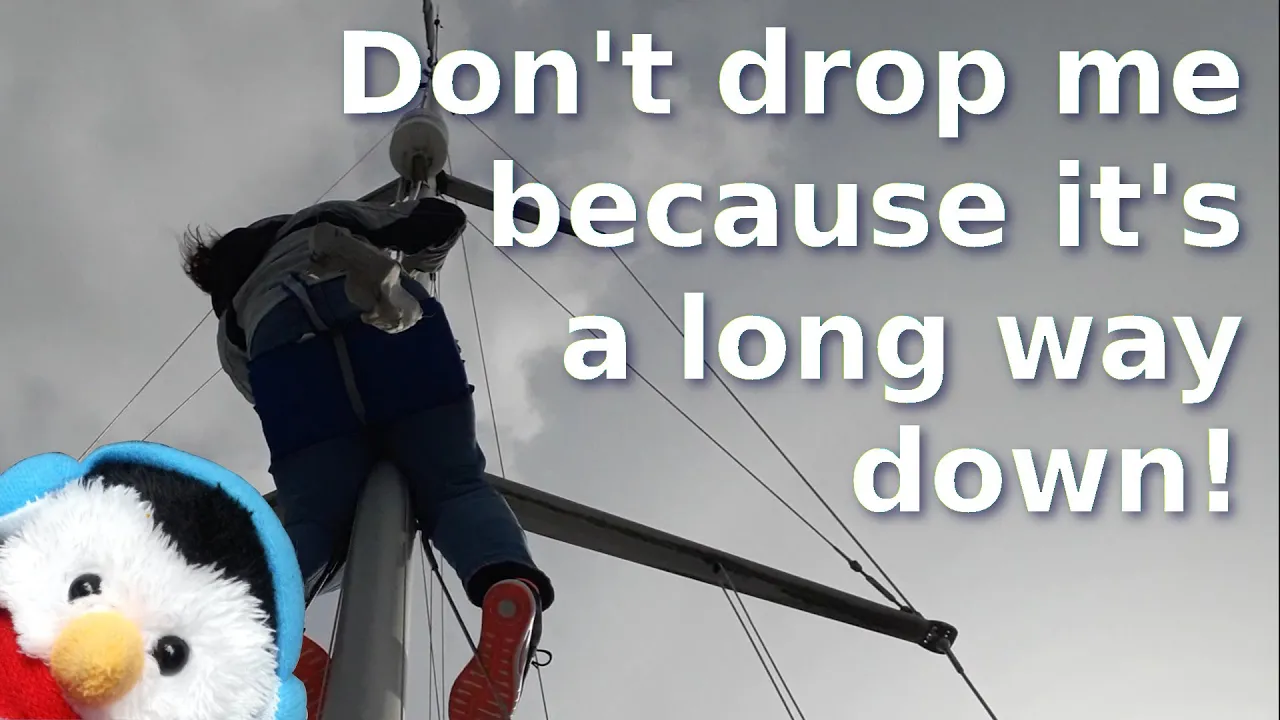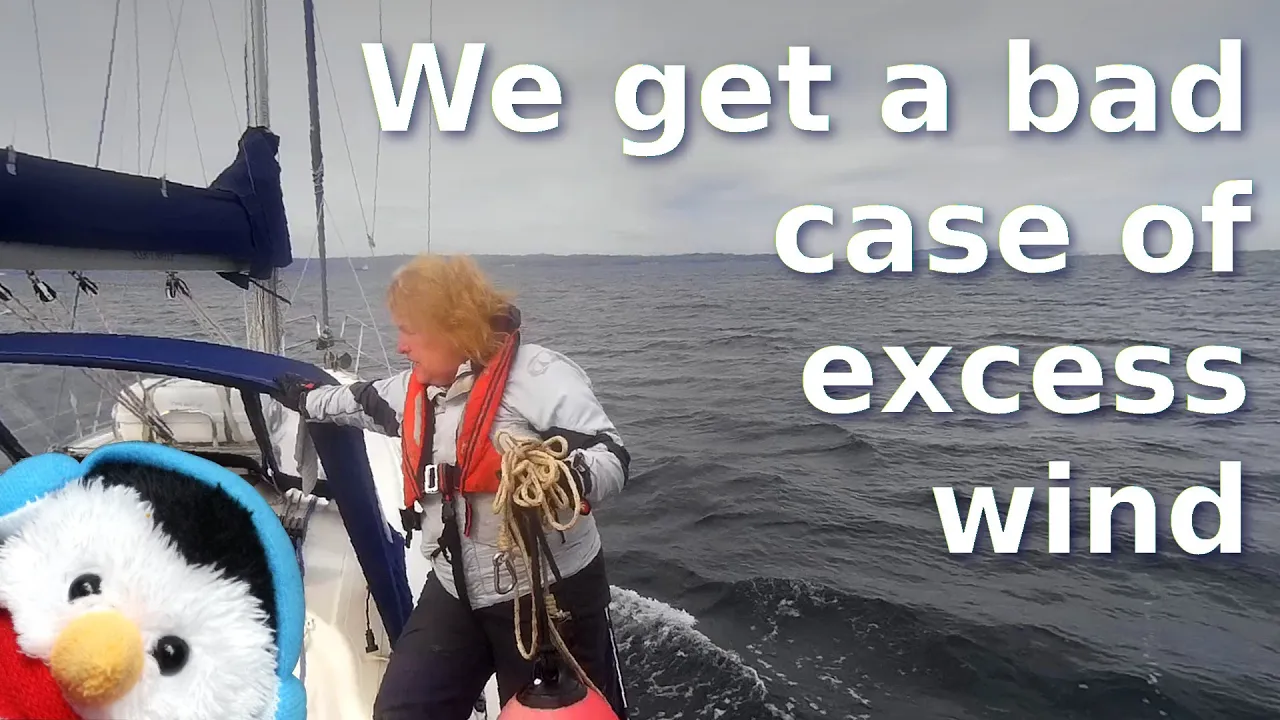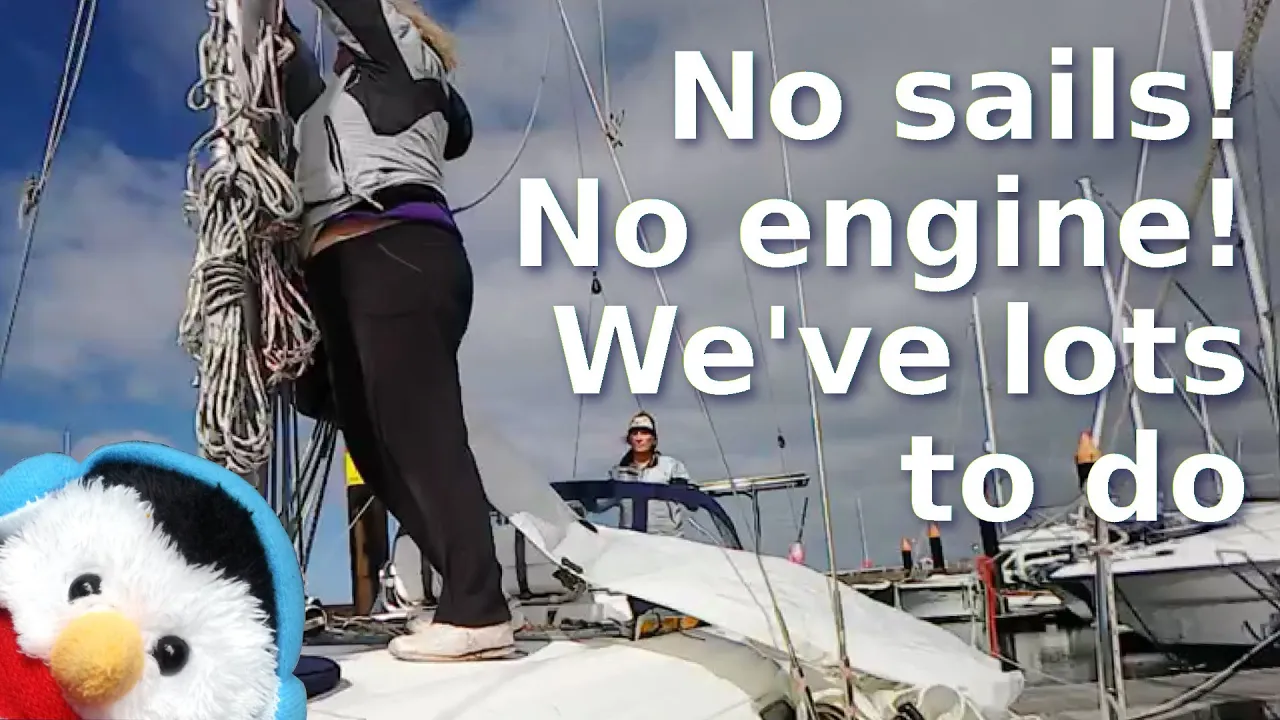Salty Lass was tested as much as we could, so now it was time to go out and test ourselves with a few basic manoeuvrers like tacking, putting reefs in, gybing and the like. Also seeing as Beverley has taken Salty Lass out last time, it was now my turn, this meant that I would be taking Salty Lass out backwards.
Before we leave to go anywhere, we always check our oil, fan belt, sea strainer and coolant, well our coolant was well down. This was not surprising seeing as we had completely drained the system of coolant and there could of been airlocks in the system. The other issue was that the fan belt was too depressing. With a fan belt you should only be able to push your fan belt in by the width of your finger and I could depress it more than that, so with a lot of grunting and cursing on our part we managed to secure the alternator, so that the fan belt was the way we wanted it.
Going out into a cross wind
Once we were ready to go, I had 20 knots of crosswind on my beam. That would mean that I would have the full effect of that crosswind while if the crosswind was coming from the nose for example i would have no crosswind. So with having 20 knots of crosswind we discussed the best strategies and these are the ones we used:-
- Wait - We were going out at 14:00 which is in the gusty part of the day which is between 13:00 and 15:00 hours. The sun pumps energy into the atmosphere and one of the things, that energy goes is into the wind. We were not waiting on a tide, or a lock gate, so we could wait until the wind died down, so that is what we did.
- Go out into the crosswind - As I was going backwards the rudder would have the most authority over the direction Salty Lass would go, while the nose will always tend to fall off. So I decided to go out into the crosswind, this worked really well and it is certainly a strategy that I will be using in future.
Out in the lock
Once out in the lock, we had quite a lot of commercial traffic to dodge so I really got to grips with understanding time to closest approach, and distance to closest approach. This is an area that I will have to improve on, but at least I have started my understanding of another one of our boat systems. While we were out, we completed what we call our standard manoeuvrers, tacking, gybing, a heave to, putting a reef in and shaking it out. We were not perfect but it helped improve our confidence and that is what we both wanted.
Servicing our windlass and chain
On our anchor chain we
- Inspected the chain for rust - There was one part that looked like it was on the edge of rusting so we sprayed cold galvanising spray over the chain at this part
- Inspecting the anchor for rust - We had a little bit of rust around where the securing pin goes through the anchor, so we cleaned it up and sprayed cold galvanising spray over that part.
- Adding more colour codes - The colour codes on the chain have worked really well, but we decided to add another set just so that we had more chance of seeing them
We also asked for help with regard to the swivel, what is the best policy on replacing this.
With our windless it was clear that we should of serviced it a lot sooner, rather than three years into cruising, but eventually even the scary things need to be looked at and sorted out. We had a lot of galvanic corrosion on some of the screws but because we have less physical strength in our arms, we found a way of using our legs which has the strength to do the job. Once the screws were removed, it was just a case of cleaning everything with a scrubber and then greasing it.













